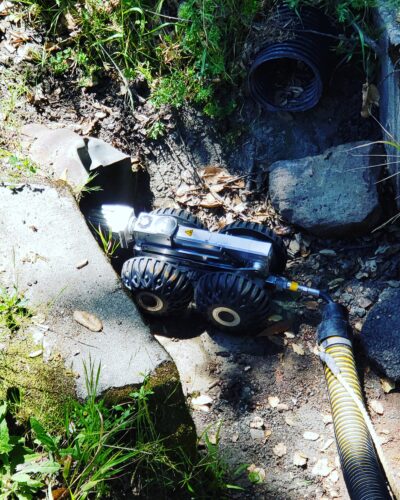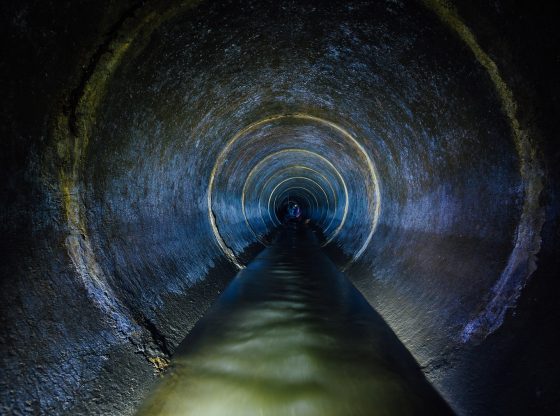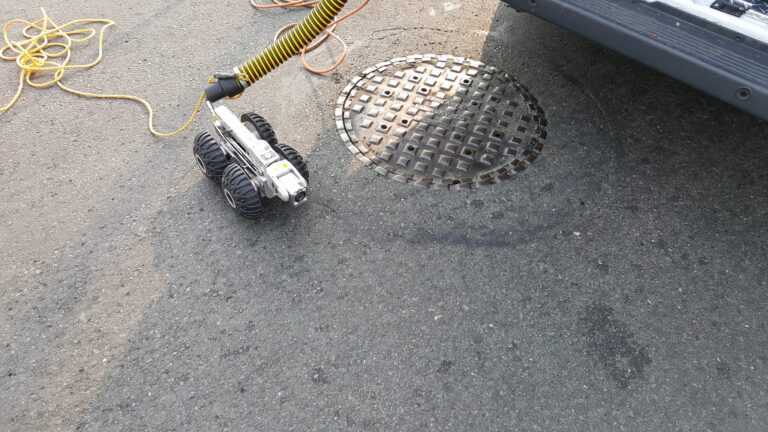How Sinkholes Can Cause Critical Damage

We depend on great sewage pipes and pipeline infrastructure. It keeps us healthy, safe, and efficient as a community.
But without the proper care, we can suffer real emergencies and life-threatening hazards.
Sinkholes are a big concern for pipe safety, especially during extreme weather.
Together, we will dive into what happens when we don’t take the precautionary measure to prevent sinkholes and what we can do about it.
Defining Sinkholes

Source: Wiki Commons; Pictured above is a sinkhole in a parking lot of Georgia Tech, Atlanta, Georgia; the hole was 32ft. deep and caused by rainwater leaking through the pavement because of a sewer line crack.
Sinkholes can happen naturally or be caused by man through drilling, tampering with geography, or neglecting to care for infrastructure.
Oxford Dictionary defines a sinkhole as “a cavity in the ground, especially in limestone bedrock, caused by water erosion and providing a route for surface water to disappear underground.”
While sinkholes can be devastating naturally, many happen due to preventable artificial reasons.
If a community or city does not care for its pipelines through inspections, maintenance, and repairs, sinkholes will happen when the infrastructure is stressed due to severe weather.
Heavy rainfall and flooding can cause sinkholes to form. Excess water can seep into the ground and saturate the soil, leading to erosion.
Underground water flow can also contribute to the formation of sinkholes, as water dissolves soluble rocks and sediment, creating voids in the ground.
When a pipe breaks or leaks, it is only a matter of time before its surroundings are compromised.
What if I notice a sinkhole?
Call 911 immediately. The surrounding infrastructure is compromised, and anything can collapse, causing harm to anyone near it.
Prevention and Detection of Sinkhole Activity
The best thing you can do is identify the signs of a possible issue and practice proper maintenance for prevention.
1. Sinkhole Warning Signs
Sinkholes start subtly, and you can easily miss them if you are not careful, which is why routine checkups and inspections are critical. Extreme weather will cause sinkholes if the pipes and ground are vulnerable, so by the time you notice it, it’s often too late.
But you can look out for a few things in-between inspections.
- There are leaks or signs of bad pipes
- Cracks in infrastructure within homes and buildings
- Increase in visible tree roots
- Fences and poles seem to be sinking or uneven
- The ground has depressions
While you may notice these signs, you should never depend on your eyes to know if a sinkhole is imminent.
2. Maintenance, Inspections, and Repairs
The best thing to do is start with an inspection.
At 360 Pipes, we use CCTV technology that gathers crystal-clear footage of pipes and identifies issues with pinpoint accuracy. For example, we find cracks or debris that may compromise your flow.
Once you know the issue, you either clean the pipes if there is a blockage, like our hydro-jetting service, or you may need a structural repair.
By taking care of your pipelines, you help prevent sinkholes.
You can trust a safe and healthy pipeline system through preventative measures and responsible maintenance.








